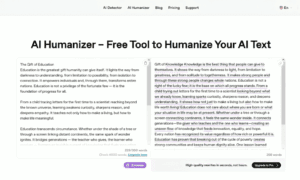Switching from in-house warehousing to a third-party logistics (3PL) provider is a big move. It’s like handing over the keys to a critical part of your business. Done right, it can streamline operations, cut costs, and free up time for strategic growth. Done poorly, it can lead to delayed shipments, frustrated customers, and a logistical nightmare. For operations managers, the stakes are high. You’re tasked with ensuring this transition is seamless, cost-effective, and aligned with your company’s goals. This guide takes through the process planning, vendor selection, and avoiding common pitfalls along with practical insights to keep your supply chain humming.
Why Make the Switch?
Before diving into the how, you need to find out about the why. In-house warehousing gives you control, but it comes at a cost. Real estate, labor, technology, and equipment eat into margins. Scaling up means even more investment, and fast-growing businesses often struggle to keep up. A 3PL provider offers flexibility, expertise, and economies of scale. They handle the heavy lifting, storage, picking, packing, and shipping, so you can focus on product development, marketing, or expanding your market.
Transitions are tricky. Customers expect fast, accurate deliveries, and any slip up can damage your reputation. The goal is to move to outsourcing without missing a beat. Here’s how to make it happen.
Step 1: Strategic Planning for a Smooth Transition
A successful switch starts with a clear plan. Without it, you are gambling with your operations. Begin by assessing your current setup. Map out your warehousing and fulfillment processes including, inventory management, order fulfillment, returns handling. Document every step. This will be your blueprint for what the 3PL needs to replicate.
Next, analyze your data. Look at order volumes, seasonal peaks, and SKU complexity. For example, if you’re an e-commerce retailer with 10,000 monthly orders and a spike during Black Friday, your 3PL must handle that surge. Calculate your current warehousing costs, rent, utilities, labor, software. This gives you a baseline to compare against 3PL pricing. Don’t forget hidden costs like maintenance or downtime from equipment failures.
Set clear objectives for outsourcing. Are you aiming to reduce costs by 20%? Improve delivery times by two days? Expand into new markets? These goals shape your vendor selection and keep everyone aligned. Involve key stakeholders, finance, sales, and customer service teams to ensure the transition supports broader business needs. For instance, if your customer service team relies on real-time inventory updates, your 3PL’s tech stack needs to deliver.
Finally, create a timeline. A typical transition takes 3-6 months, depending on complexity. Consider vendor selection, contract negotiations, data migration, and testing. Rushing this risks disruptions, so give yourself plenty of time.
Step 2: Choosing the Right 3PL Partner
Picking a 3PL isn’t as simple as one might seem. The wrong partner can sink your operations. Start by narrowing your options. Look for providers with experience in your industry. Check their geographic footprint. If you’re shipping nationwide, a provider with multiple distribution centers can cut transit times.
Investigate their technology. Modern 3PLs offer warehouse management systems (WMS) that integrate with your e-commerce platform or ERP. Ask for demos to see how their dashboards handle inventory tracking, order status, and reporting. Compatibility is non-negotiable and your systems must talk to each other without error.
Evaluate their scalability. A good 3PL grows with you. If your business doubles in two years, can they handle the volume? Ask about their capacity, staffing flexibility, and ability to open new facilities. References matter too. Talk to current clients about reliability, responsiveness, and problem-solving. A 3PL that ghosted a client during a holiday rush isn’t one you want.
Cost of course is critical, but don’t let that keep you away from someone that may not fit into your budget. The cheapest option might skimp on service or tech. Request detailed pricing breakdowns inlcuding storage fees, pick-and-pack costs and shipping rates. Compare these against your in-house expenses. A 3PL charging $2 per order might seem pricey until you realize it saves you $50,000 annually in labor and rent.
Finally, visit their facilities if at all possible. See how they handle inventory, maintain cleanliness, and train staff. A disorganized warehouse is a red flag. Trust your gut because if something feels off, it probably is.
Step 3: Executing the Transition
With a 3PL selected, it’s time to execute. This is where planning pays off. Start with a pilot phase. Transfer a small portion of your inventory to the 3PL. Test their processes with low-risk orders. Monitor key metrics: order accuracy, fulfillment speed, customer feedback. If issues should arise, you canaddress them before scaling up.
Data migration can be a complex and challenging process. Your inventory records, customer data, and order histories need to transfer cleanly. Work closely with the 3PL’s IT team to map fields and test integrations. Double-check that no data is lost or corrupted during the transfer.
Staff training is another critical piece. Your team needs to understand new workflows, like how to access the 3PL’s portal or handle returns. The 3PL should provide training sessions or documentation. Don’t assume your staff will figure it out, proactive training prevents errors.
Communicate with customers too. If the transition changes delivery times or return processes, let them know in advance. Transparency builds trust. For example, a simple email explaining that you’ve partnered with a new logistics provider to improve service can preempt complaints.
Finally, phase the transition. Don’t flip the switch overnight. Gradually shift inventory and orders to the 3PL over weeks or months. Monitor performance at every step. This minimizes risk and lets you fine-tune processes.
Avoiding Common Pitfalls
Even the best-laid plans can hit snags. Here are the traps to watch for—and how to dodge them.
Underestimating Integration Time. Syncing systems can take longer than you think. A 3PL’s WMS might not play nice with your ERP, leading to delays or errors. Test integrations early and often. Have a backup plan, like manual order entry, for worst-case scenarios.
Ignoring Hidden Costs. Some 3PLs nickel-and-dime you with fees for returns, custom packaging, or peak season surcharges. Scrutinize contracts and ask for all-in pricing. Negotiate terms upfront to avoid surprises.
Poor Communication with the 3PL. Treat your 3PL like a partner, not a vendor. Regular check-ins keep issues from snowballing. Assign a point person to manage the relationship and resolve problems quickly.
Neglecting Customer Experience. A 3PL’s mistakes reflect on you. If they ship late or mix up orders, your customers won’t care who’s to blame. Set clear service-level agreements (SLAs) in the contract, like 99% order accuracy or 24-hour shipping. Monitor compliance closely.
Overlooking Scalability. Ask about their capacity limits and growth plans. If you’re eyeing international expansion, confirm they can handle cross-border logistics.
Rushing the Transition. Speed kills. Moving too fast can lead to inventory mismatches or system failures. Stick to your timeline and resist pressure to cut corners, even if sales are booming.
The Road Ahead
Outsourcing warehousing and fulfillment services isn’t a magic bullet, but it can transform your business. If done correctly, it frees up resources, boosts efficiency, and lets you focus on what you do best. The key is meticulous planning, a reliable 3PL partner, and a phased approach to minimize disruption. Operations managers who get this right don’t just keep the lights on, they position their companies for growth in a competitive market.





























